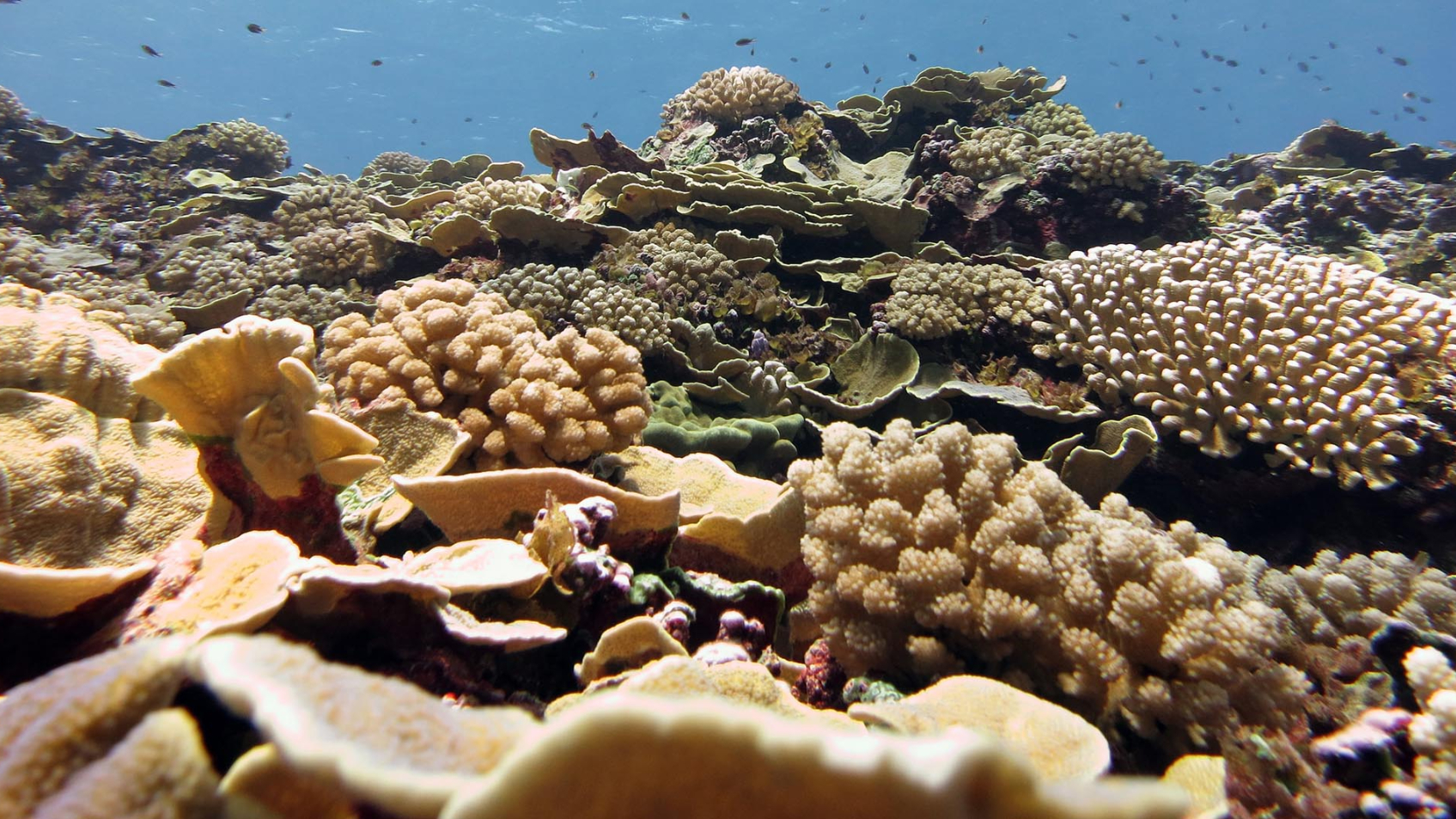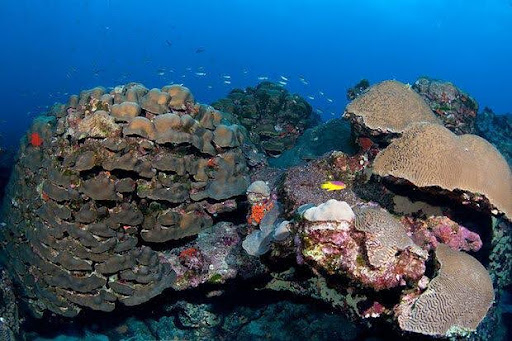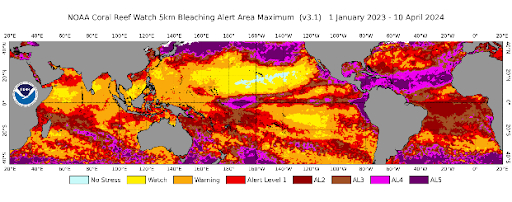Satellites are game changers for protecting coral reefs in a warming world
Wishing you a happy belated Coral Reef Awareness week.

Coral Reef Awareness Week took place across the globe during the week of July 15 as an annual reminder of the importance of these underwater ecosystems. But seeing as how these structures are crucial to both the waters they call home and to the land we live on, I'd say they deserve far more attention than they can get in just seven days — especially amid a warming world.
Beyond even their natural purpose, these habitats also are extremely important for the economy. They are responsible for roughly $9.8 trillion each year globally; in the United States alone, the services provided by coral reefs in the form of fisheries, tourism and coastal protection top $3.4 billion annually.
On the bright side, thanks to satellites, scientists have been able to better understand these "rainforests of the sea," which are home to nearly 25% of our planet's marine life, accounting for more than 4,000 different types of fish.
Coral Reef Awareness Week took place across the globe during the week of July 15 as an annual reminder of the importance of these underwater ecosystems. But seeing as how these structures are crucial to both the waters they call home and to the land we live on, I'd say they deserve far more attention than they can get in just seven days — especially amid a warming world.
Related: Beavers are helping fight climate change, satellite data shows

Beyond even their natural purpose, these habitats also are extremely important for the economy. They are responsible for roughly $9.8 trillion each year globally; in the United States alone, the services provided by coral reefs in the form of fisheries, tourism and coastal protection top $3.4 billion annually.
On the bright side, thanks to satellites, scientists have been able to better understand these "rainforests of the sea," which are home to nearly 25% of our planet's marine life, accounting for more than 4,000 different types of fish.
Get the Space.com Newsletter
Breaking space news, the latest updates on rocket launches, skywatching events and more!
"One of the main challenges before satellites was the coverage that we had of the seafloor. We needed more boat-based technology such as sonar to monitor different areas but it was always patchy,” Andrea Rivera-Sosa, project and outreach manager for the Global Conservation Science program with the Coral Reef Alliance, told Space.com. "Certain areas had more resources and maps and other areas that were least explored had less coverage. Satellites bring new technology to increase our coverage with global maps."
"When you use satellites," Rivera-Sosa continued, "depending on the resolution and image type, you can get a big picture of the extent of the reef. You're able to see many parameters such as watercolor, and then you can take that image and process it to see depth and its bathymetry among other parameters. If the water is green, there's more algae and if it's clear, it has fewer nutrients. We can also see how turbid — murky — it is from suspended particles from rivers and other sources."
![A globe of earth over a white background is circled by different illustartions of various satellites. This diagram shows the 9 satellites (5 geostationary [orange] and 4 polar-orbiting [blue], updated July 18, 2023) that contribute data to the daily global 5km satellite coral bleaching monitoring products.](https://cdn.mos.cms.futurecdn.net/Mx8vWo7HZYjGDbNUUrnSqG.jpg)
The National Oceanic and Atmospheric Administration (NOAA) was at the forefront in establishing a network for monitoring and studying global coral reefs. In the year 2000, the organization actually created a program called the Coral Reef Watch (CRW), and over the past 20 years, partnerships grew amongst reef managers and researchers using imagery and data from NOAA satellites, computer models, and real-time observations. Altogether, CRW really helped scientists keep an eye on the health of the reefs as well as any threats these habitats faced from pollution, climate change and overfishing.
"We know that coral reefs remain in serious trouble by ocean warming in particular, but we also know that decreases in coastal pollution and increases in reef fish stocks can help reefs become more resilient in the long run," Greg Asner, the director for the Arizona State University Center for Global Discovery and Conservation Science, told Space.com. "As the director of the Allen Coral Atlas (ACA), we have excellent tracking of how our satellite data streams are helping people manage and monitor coral reefs worldwide."
"We average about 60,000 users per year and about 600 to 800 dataset downloads per month," Asner continued. "Our users make decisions using ACA data on topics of marine spatial planning and protection including 35 new marine protected areas and similar designations since 2020. Many of our users also monitor water quality and coral bleaching using the ACA — the only global near real-time source for this information on Earth."

Back in April, the NOAA shared that, for the fourth time in recorded history, a global coral bleaching event is underway. Imagery and data from satellites provided scientists and researchers with confirmation of the event and the locations in which coral was under the most stress from these historically warm ocean waters.
A fleet of watchful eyes from space can detect changes in location temperature on a rather large scale, even in remote locations that, in the past, posed a challenge when it came to obtaining data. This is just one example of how satellite imagery keeps the globe up-to-date on impacts associated with climate change, allowing scientists to better understand our planet, identify problems and push for positive change and adaptation.
"We are all connected to the ocean, one way or another. Satellites have also helped provide information on the impacts of climate change at a level that we didn't have before. Satellite data provides support on sea surface temperature, sea level rise, bleaching, and it also can provide information on ocean acidification," Rivera-Sosa said. "Oceans help regulate our climate; they are absorbing all this energy produced by us, humans. If we keep on heating our system, then our oceans become warmer and lose their ability to regulate our climate. We are seeing massive coral bleaching events and stronger, more intense hurricanes. And this has an impact on us, anywhere we live"
Join our Space Forums to keep talking space on the latest missions, night sky and more! And if you have a news tip, correction or comment, let us know at: community@space.com.

Meredith is a regional Murrow award-winning Certified Broadcast Meteorologist and science/space correspondent. She most recently was a Freelance Meteorologist for NY 1 in New York City & the 19 First Alert Weather Team in Cleveland. A self-described "Rocket Girl," Meredith's personal and professional work has drawn recognition over the last decade, including the inaugural Valparaiso University Alumni Association First Decade Achievement Award, two special reports in News 12's Climate Special "Saving Our Shores" that won a Regional Edward R. Murrow Award, multiple Fair Media Council Folio & Press Club of Long Island awards for meteorology & reporting, and a Long Island Business News & NYC TV Week "40 Under 40" Award.









